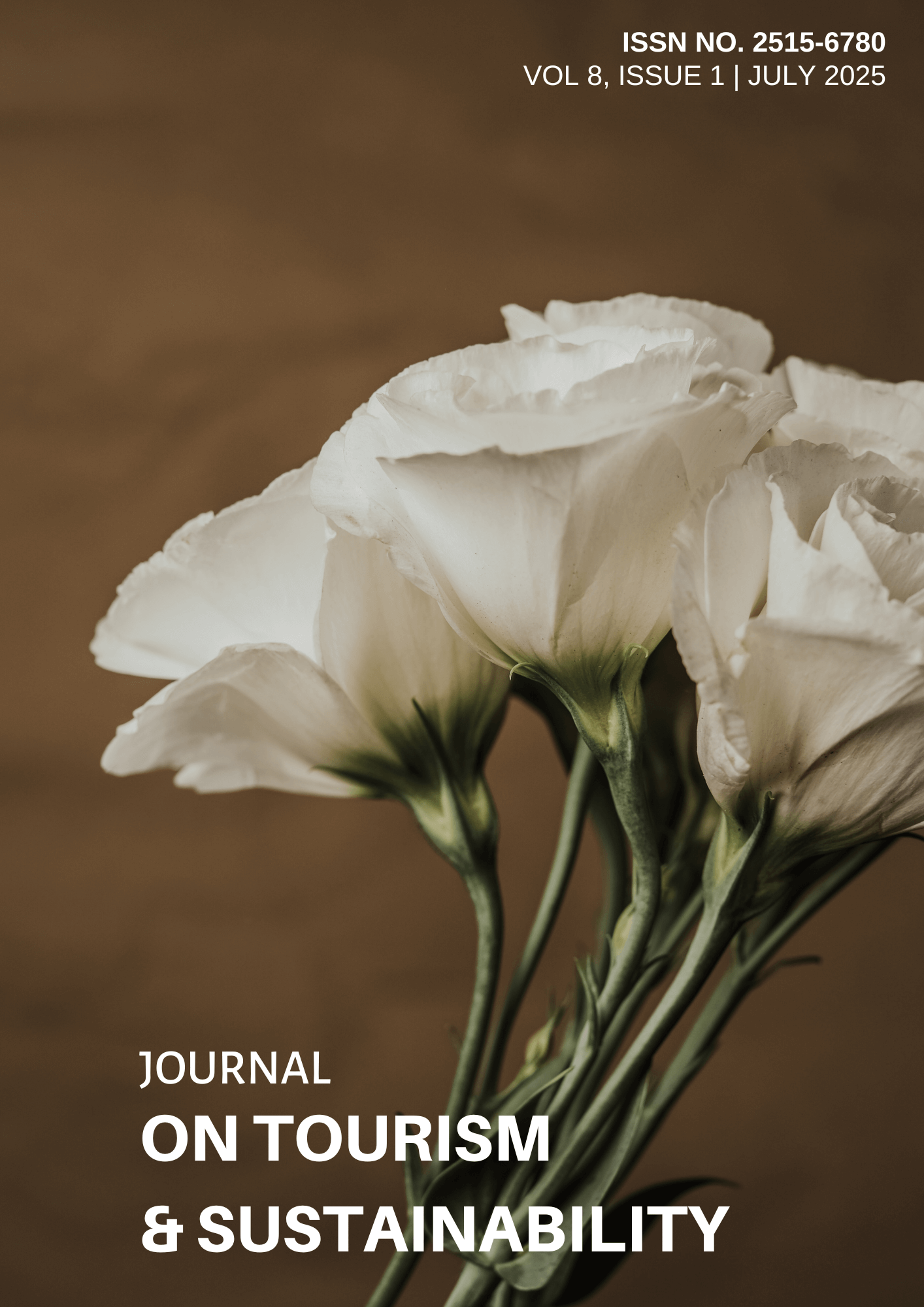Understanding Tourist Behavior And Conservation Implications: A Case Study Of Leopard Sightings In Horton Plains National Park, Sri Lanka
DOI:
https://doi.org/10.5281/zenodo.16321480Keywords:
Horton Plains National Park, Leopard Sightings, Sustainable Tourism, Tourist Behavior, Wildlife ConservationAbstract
This study investigates the relationship between tourist behavior and leopard conservation efforts in Horton Plains National Park, Sri Lanka. The primary aim is to understand the impacts of tourist activities on wildlife conservation, specifically focusing on leopards, and to develop strategies for sustainable wildlife tourism management. A mixed-methods approach was employed, combining observational studies and semi-structured interviews with tourists, park staff, and wildlife authorities. Observations were conducted during peak tourist seasons, focusing on areas with frequent leopard sightings. Interviews explored tourists' attitudes, behavioral intentions using the Theory of Planned Behavior (TPB), and adherence to park regulations. The findings reveal that tourists generally exhibit positive attitudes towards leopards, viewing sightings as significant highlights of their park experience. However, a considerable proportion of tourists engaged in behaviors that could harm leopards and their habitats, such as straying off marked trails, making loud noises, and feeding wildlife. The study identified a compliance rate of 65.8%, indicating room for improvement in adherence to park guidelines. The TPB framework highlighted that social norms and perceived behavioral control significantly influenced tourist behavior, with observed violations often prompting similar actions by other visitors. The study concludes that increased visitor education, stricter enforcement of regulations, and sustainable management practices are crucial for mitigating negative impacts on wildlife. Recommendations include developing interpretive programs, enhancing ranger patrols, fostering stakeholder collaboration, and prioritizing habitat conservation efforts. This research contributes valuable insights to the discourse on sustainable wildlife tourism and conservation practices, offering strategies to balance tourist activities with conservation objectives. By implementing these measures, Horton Plains National Park can ensure the long-term protection of leopards and maintain its ecological integrity, promoting a harmonious coexistence between humans and nature.References
Downloads
Published
2025-07-22
Issue
Section
Papers
License
Copyright (c) 2025 M.T. Pathirana, R. Green

This work is licensed under a Creative Commons Attribution 4.0 International License.
- Authors retain copyright and grant the journal right of first publication with the work simultaneously licensed under a Creative Commons Attribution License that allows others to share the work with an acknowledgement of the work's authorship and initial publication in this journal.
- Authors are able to enter into separate, additional contractual arrangements for the non-exclusive distribution of the journal's published version of the work (e.g., post it to an institutional repository or publish it in a book), with an acknowledgement of its initial publication in this journal.
- Authors are permitted and encouraged to post their work online (e.g., in institutional repositories or on their website) prior to and during the submission process, as it can lead to productive exchanges, as well as earlier and greater citation of published work.
How to Cite
Understanding Tourist Behavior And Conservation Implications: A Case Study Of Leopard Sightings In Horton Plains National Park, Sri Lanka. (2025). Journal On Tourism & Sustainability, 8(1). https://doi.org/10.5281/zenodo.16321480




